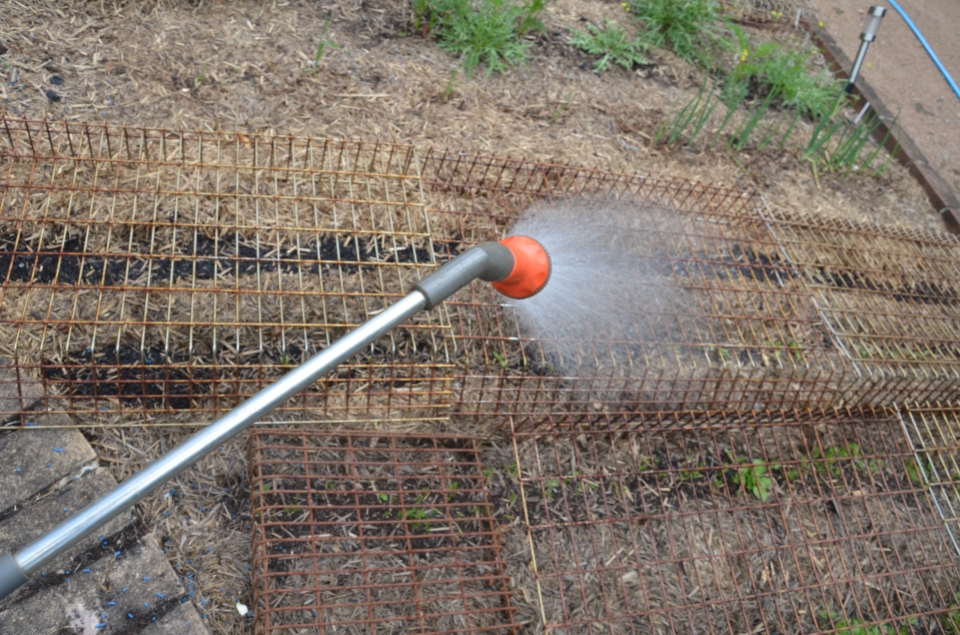Following on from my blog about preparing your garden for extremely hot days, and as we head into summer, I thought a bit of advice of preparing your garden for extended dry periods would be appropriate.
The 1997-2009 drought in eastern Australia was one of the longest and most severe droughts the country has experienced, with annual rainfall 12% below the long-term average. This month we have only had 5mm of rain, when on average in November we get 90mm. Admittedly the month is not over but having been out digging in the garden this week, most areas are dry. We have had a warmer than average spring, with lower than average rainfall and the Bureau of Meteorology is predicting that this November to January period will be warmer and drier than normal. Now I am not saying we are in drought again, but as gardeners in Australia we should always be prepared for extended dry conditions. So here are a few tips on what can we do to counteract expected increase in occurrence, duration, as well as the severity of extended dry periods and droughts.
For your annual vegetable and herb garden, install enough rainwater collection devises to enable you to water annual plantings. Make sure there is enough capacity to get you through the dry times. This obviously has to be balanced with the amount of space they take up.
Be creative! Often in the vegetable garden where you have plants at various stages of growth and having different water requirements, hand watering may be the most effective form of watering.
Just a few tips here:
- Water in the mornings and avoid wetting the foliage, this easy if you have a long handled water breaker on your hose.
- Water thoroughly to encourage deeper root growth. Always check the depth the water has penetrated by moving aside any mulch and sticking your finger into the soil, if soil is not moist to at least a finger depth then continue to apply until it is.
- Apply Seasol regularly during hot, dry weather to improve the hardiness of your plants.
- Mulch. This should be applied at least 10cm thick which will reduce evaporation and reduce soil temperature which will reduce the plants use of soil moisture.
- Mulch also adds organic matter to your soil. Adding organic matter to your garden increases the humus content of the soil and this acts as a reservoir of moisture, both capturing available moisture and making it available to plants as they need it.
For your ornamental and permanent food producing plants planning is the key here:
- Plan you plant selection with extended dry periods and water restrictions in mind. Once established, that is getting newly planted plants through their first summer, permanent plantings, particularly ornamentals, should survive on rainfall only. However in the case of food bearing plants this needs to be balanced with your need for production. Here a decision has to be made as to how you will supply supplementary irrigation to your food producers, often the solution again is by installing rainwater collection devises and Installing water efficient irrigation (drip or underground porous hoses) to maximise the usage of the water you do have.
- Grow plants that are drought hardy, often these are local indigenous plants or those from arid areas or plants from similar climatic zones around the world such as the Mediterranean, California, Mexico and the Western Cape Province of South Africa.
- Group plants according to their water requirements; this is an effective way of using water and reduces unnecessary watering of plants that will survive on rainfall only.
- Apply fertilisers sparingly and apply in a slow release organic form which will encourage strong hardy plants, as soft growth will not withstand extended dry periods and drought.
- Mulch, mulch and more mulch.
- Grow trees – they have a much deeper root system, enabling them to search out and reach available moisture in the ground; they cool the surrounding area and reduce evaporation particularly for plants growing underneath them, which reduces their water needs.
- Reduce lawn areas as they are very water reliant. Where you need/want a lawn choose drought tolerant species suitable to your location and water thoroughly to encourage deep root growth.
So with a little bit of planning and good management, our gardens should not only survive during extended dry periods but be productive as well.
Are you suffering from a bit of dryness in your area? I would love to hear about what you are doing in your garden to help your garden. You can share pictures, tips and tricks on my Facebook Page, Twitter page or via Pinterest.
Happy gardening, Kathy







